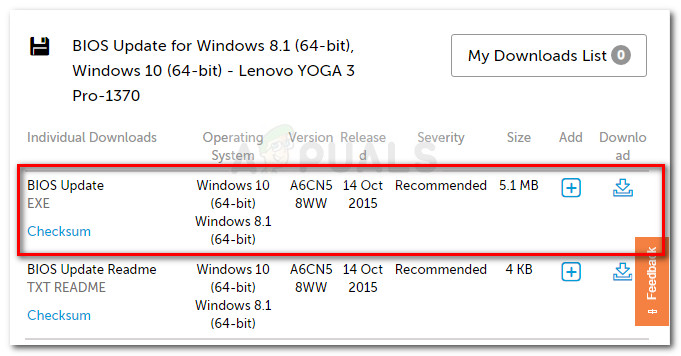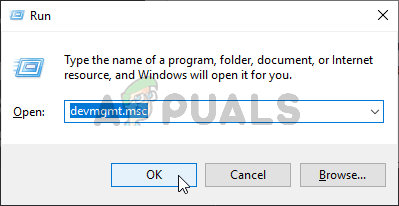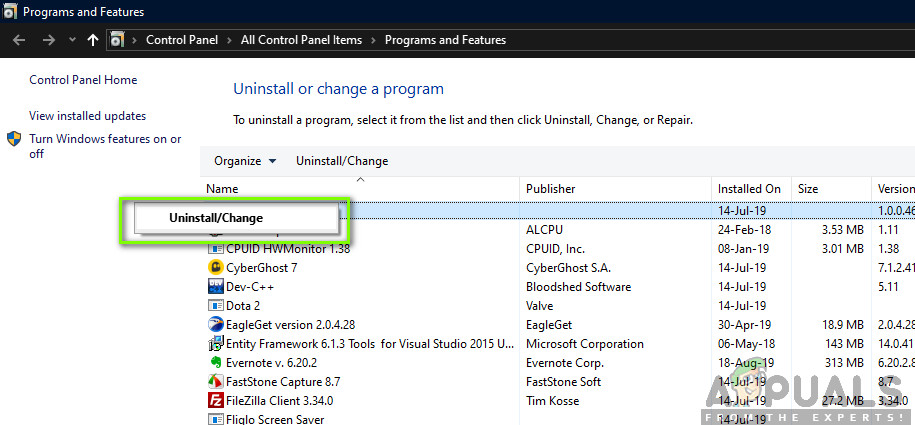What’s causing the Stop Error 0x0000009f?
We’ve investigated this particular issue by looking at various user reports and by trying out the various repair strategies that affected users have successfully used to get to the bottom of this issue. As it turns out, several different scenarios might end up producing this particular issue. Here’s a shortlist of potential culprits that might be involved:
Method 1: Uninstall 3rd party security suite (if applicable)
It turns out that this random stop error can be caused by an overprotective AV suite that is somehow crashing the system by interfering with a critical component. In most cases, the interference occurs on a kernel level. If you’re using a 3rd party security suite and you’re suspecting that this scenario might be applicable, you can confirm or infirm your suspicions either by disabling the real-time protection of your AV suite or by uninstalling it altogether. Ideally, you should start by disabling real-time protection. But keep in mind that this procedure will be different depending on the type of 3rd party AV suite that you’re using. However, in most cases, you’ll be able to do this directly from the taskbar icon of your antivirus or firewall suite. Once you do this, repeat the action that was causing the Stop Error 0x0000009f and see if the issue is now resolved. If the issue persists, you should ensure that you eliminate this possibility by doing a complete uninstallation and ensuring that you’re not leaving behind any leftover files that might still cause this problem. To do this, follow this article (here) for step-by-step instructions on uninstalling the 3rd party suite any potential remnant files. NOTE: If you do this and you discover that the issue is resolved, you don’t necessarily have to migrate to a different 3rd party suite. Windows Defender will automatically kick in and take the place of the uninstalled 3rd party suite. However, if the same issue is still occurring even after you disable the 3rd party security suite or this method didn’t apply to your scenario, move down to the next method below.
Method 2: Updating BIOS version
A problem with your BIOS version or with the low-level chipset drivers can also facilitate general system instability that might ultimately lead to the apparition of the Stop Error 0x0000009f. Several affected users have reported that they finally managed to resolve the issue after updating their BIOS version on their PCs. But before you pursue this repair strategy, be advised that an improper BIOS installation procedure might end up producing other issues including startup issues. If you want to try this fix, do it at your own risk! And if you decide to do it, follow the instructions to the letter. Keep in mind that BIOS interfacing and the exact process behind this operation will be different depending on the configuration that you’re using. But regardless of your motherboard manufacturer, follow the instructions carefully. Here’s the official documentation for BIOS updating when it comes to the most popular motherboard manufacturers:
DellASUSAcerLenovoSony Vayo
If you followed the instructions above to no avail or this method didn’t apply to your current situation, move down to the next method below.
Method 3: Running DISM and SFC scans
As it’s been confirmed by a lot of affected users, the most common cause that will spawn this Stop Error 0x0000009f is a critical process that is affected by some type of system file corruption. If this scenario is applicable, the most efficient way of resolving this problem is to run a series of built-in utilities capable of fixing local errors and system file corruption. Both DISM (Deployment Image Servicing and Management) and SFC (System File Checker) are capable of doing this. Note: Feel free to use 3rd party alternatives if you have any in mind. But if you don’t want to install additional software, this is your best option. Keep in mind that although both utilities will ultimately focus on the same thing, they have different approaches to dealing with system file corruption. For example, DISM relies on the WU (Windows Update) component to replace corrupted instances with healthy copies. SFC, on the other hand, is entirely local and uses a locally stored archive to deal with system file corruption. Because of this, our advice is to run both utilities to maximize your chances of fixing corrupted instances that might be causing the Stop Error 0x0000009f. Here’s what you need to do: If you’re still encountering Stop Error 0x0000009f errors, move down to the next method below.
Method 4: Installing the latest Intel Internet driver (if applicable)
After seeing this scenario repeat a couple of times, it’s clear that the issue can also occur due to a system component belonging to the Intel Internet Driver. In most common cases, the reported culprits are either Intel(R) Gigabit Network Connection Driver or WiFi Link Driver. If you use one of these two wireless drivers, there’s a chance that this is what’s causing the system instability. Several affected users that found themselves in a similar situation have reported that they finally managed to resolve the issue. Most of them did it by uninstalling the driver altogether (letting the generic driver take over), while others did it by reinstalling the latest Intel driver version from the manufacturer website. If this particular scenario applies to your current situation, follow the instructions below to either remove or reinstall the Intel Wireless driver and stop the BSOD crashes from ever occurring again. Here’s what you need to do: If you’re still encountering Stop Error 0x0000009f during fixed or random intervals, move down to the next method below.
Method 5: Uninstalling Daemon Tools (if applicable)
Another rare but likely culprit that might end up causing the Stop Error 0x0000009f is a pending I/O in sptd.sys. As it turns out, Sptd.sys is a faulty CD ROM emulation driver that belongs to Daemon tools. But based on some other reports, there’s also a different Daemon Tools driver (amm9h5at.sys) that might end up causing the very same behavior. Several affected users that were also struggling with this problem have reported that they managed to stop the BSOD triggered by the Stop Error 0x0000009f from occurring by uninstalling or updating their Daemon Tools installation. If this scenario is applicable, follow the instructions below for step-by-step instructions on resolving the issue by dealing with the Daemon Tools installation. Here’s a quick guide with what you need to do: In case this scenario was not applicable or you followed the instructions above and you’re still encountering the Stop Error 0x0000009f, move down to the next method below.
Method 6: Performing a repair install / clean install
If you’ve followed all the potential fixes above to no avail, you are likely dealing with some kind of corruption issue that cannot be resolved conventionally. If you’ve come this far with no alleviation to your problems, the only viable fix with the potential of resolving the BSODs caused by the Stop Error 0x0000009f is to reset every Windows component. Several users that have been facing this problem have reported that they managed to get the problem fixed by refreshing every Windows component by performing a repair install or a clean install. Keep in mind that both utilities will ultimately help you to achieve the same goal, but they have different approaches:
Clean install – This procedure is extremely straightforward and easy to perform. Although you don’t need any prerequisites like an installation media, the major downside of going this route is that you will lose all your data including apps, games, personal media and all user preferences if you don’t back them up in advance.Repair install (in-place repair) – This approach is more tedious as it involves more steps and requires you to own (or create) a compatible Windows installation media. But the major advantage of this method is that it will allow you to keep all your files (including applications, games, documents, music, videos and even some user preferences).
Regardless of the option, you end up choosing, follow the instructions to the letter and see if they end up resolving the Stop Error 0x0000009f. If the same issue is persisting, you can conclude that the issue is being caused by a hardware component (in this case, you should take your PC to a qualified technician for investigations).
Fix: Stop Error Code 0x00000024 BSOD on WindowsFix STOP Error 0x000000A5 when Installing Windows 7How to Fix Stop Error Code 0x00000667How to Fix BSOD Stop Error 0X000000C5







